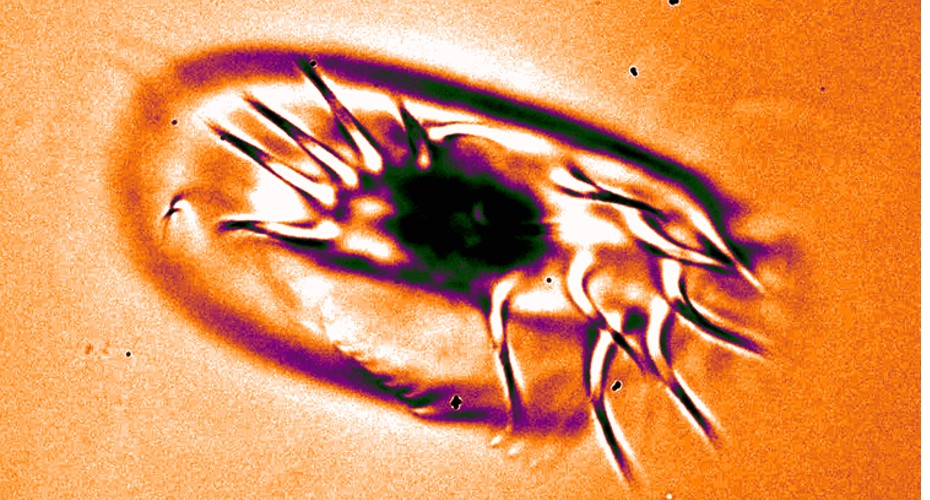Single cells have got the moves, research shows

Scientists have demonstrated how the complex movement patterns displayed by single-cell organisms are controlled by bioelectrical activity
The quest to discover how single-celled organisms are able to move and control their walking behaviour has taken a significant step forward.
A team of scientists, led by Professor Kirsty Wan from the University of Exeter’s Living Systems Institute, have demonstrated how the complex movement patterns displayed by single-cell organisms are in fact controlled by bioelectrical activity, despite having no nervous systems.
The research team used state-of-the-art imaging, tracking and recording techniques to study locomotor patterning in the ciliate Euplotes. These species are widely found in marine and freshwater environments, as well as soils and moss.
The team studied Euplotes, which use tightly bundled cilia found on its surface to form specialised leg-like appendages to ‘walk’ and ‘swim’ around its environment.
Furthermore, the cells are able to interrupt their forward movement to conduct highly coordinated turning manoeuvres – in which distinct cirri behave differently to carry out the change of direction.
The study was published in the journal Current Biology on January 17th 2024.
First author Dr Laeverenz-Schlogelhofer said: “There was a period in history when researchers were particularly fascinated by the behaviour of ciliates, this is experiencing something of a revival. Now, we can take advantage of significant advances in microscopy and computational technologies to observe and record these processes in greater detail than ever before.”
Vast arrays of species across the animal kingdom exhibit highly stereotyped behavioral actions as they explore their natural environments. In a large proportion of cases, this behavioural pattern is carried out by the neurological system initiating and regulating certain response sequences.
However, microscopic, single-celled eukaryotes also exhibit remarkably complex behaviours – despite having no nervous system to initiate this movement.
Remarkably, Euplotes uses different types of cilia for different functions. It moves around with the help of compound ciliary organelles called “cirri,” and feeds using thick tufts of cilia densely distributed on one side of the cell. Beating of the cirri on the ventral surface of the cell enables Euplotes to walk or crawl on submerged detritus and vegetation.
In order to gain new insight into how these single cells control this behaviour internally, the research team studied the bioelectrical basis of movement patterning.
They found that, as it navigates its surroundings, a walking Euplotes cell routinely performs side-stepping reactions – one of the most sophisticated manoeuvres ever observed in a single-celled organism. This movement coincides with a transient switch in the cell’s membrane electrical potential, which causes the cell to perform a transient and fast backward motion, followed by a turn.
Using high-speed imaging and time-resolved electrophysiological recordings, the researchers showed how these complex gaits are tightly regulated by rapid membrane depolarization events, which changes the activity of different types of cirri on the cell, thereby orchestrating whole-body movement.
Professor Wan added: “These insights, integrating knowledge and tools from different disciplines, give us a window into the most basal forms of biological cognition, and how some of the simplest life forms on earth achieve behavioural complexity without the need for neurons.”
Bioelectric control of locomotor gaits in the walking ciliate Euplotes is published in Current Biology.



